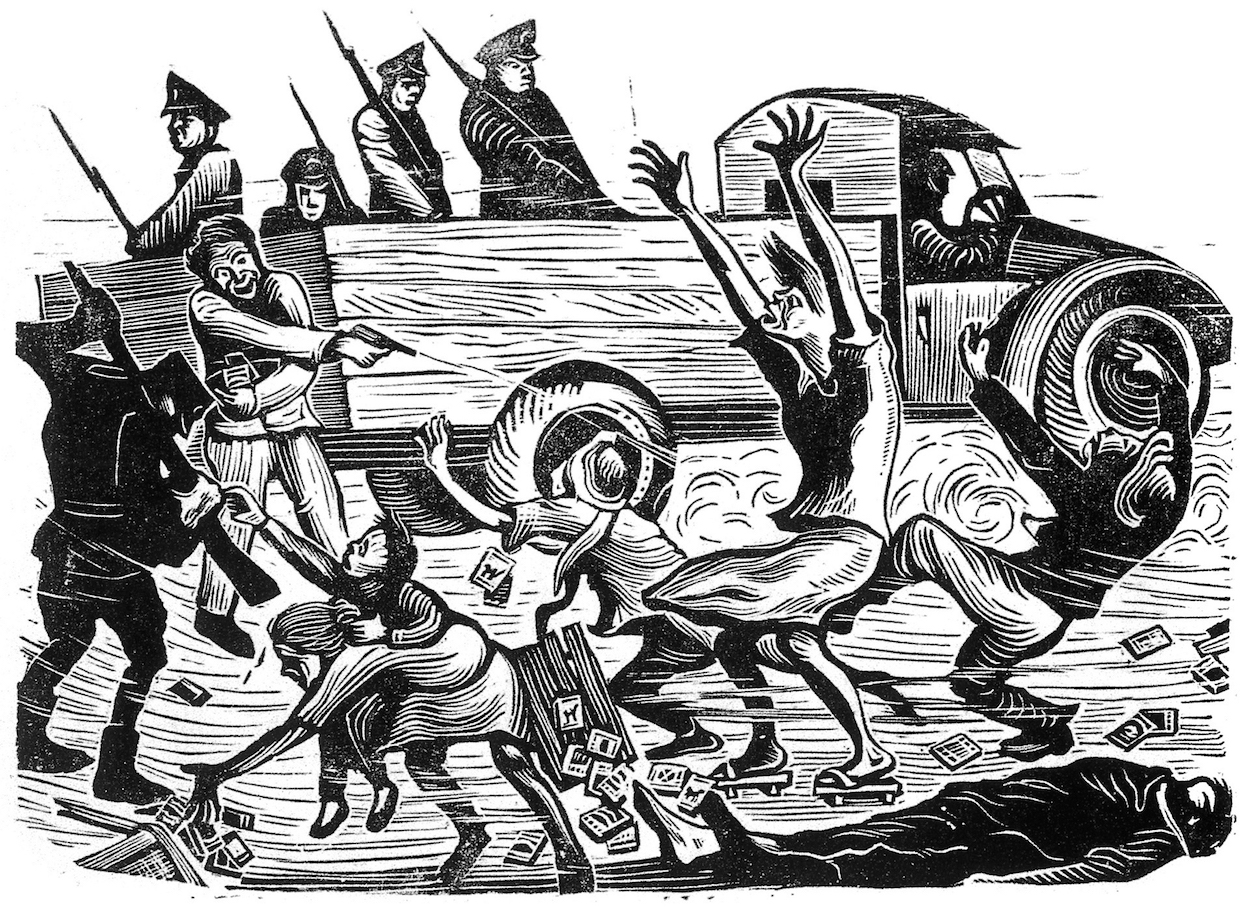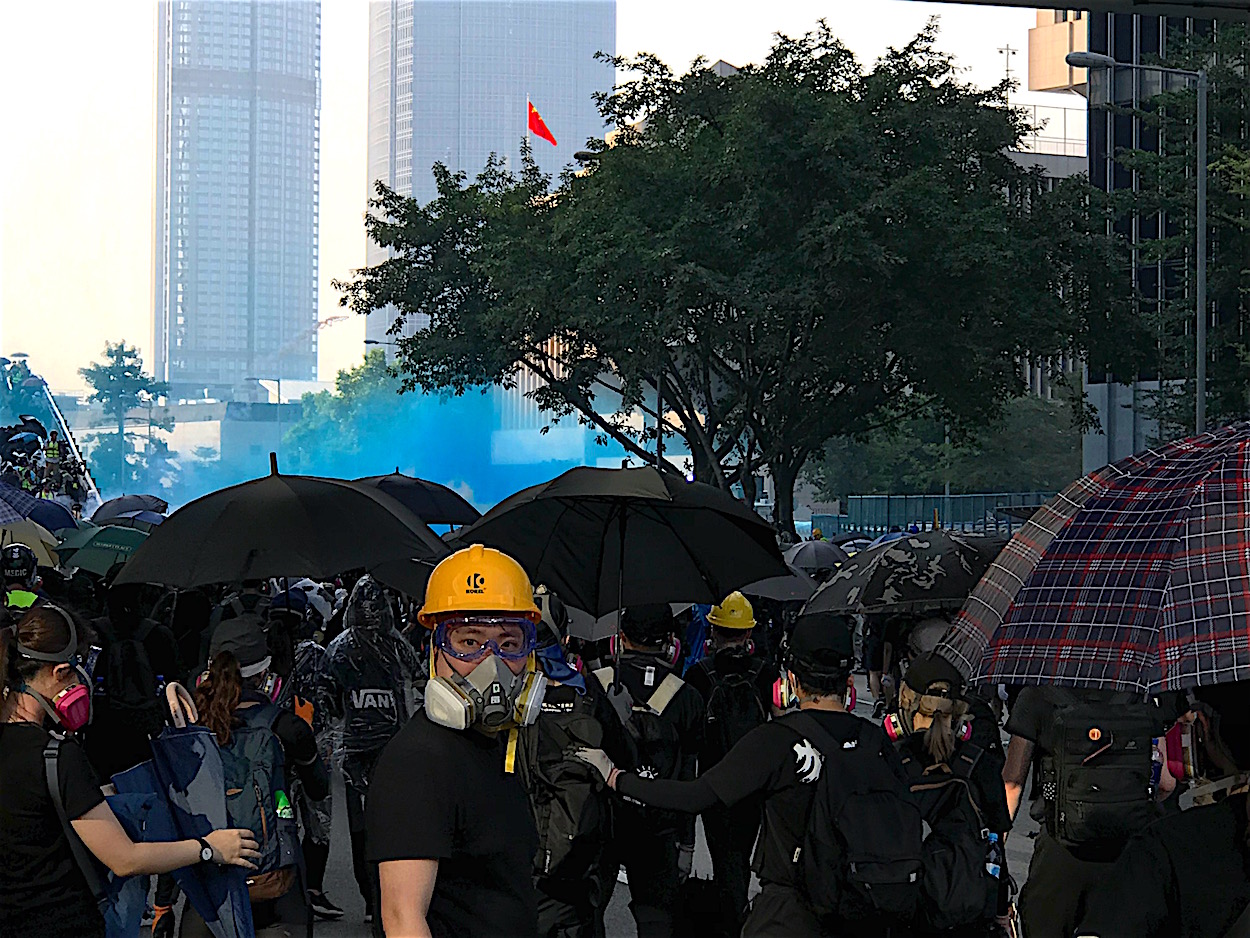by Brian Hioe
語言:
English
Photo Credit: Public Domain
ON THE 73RD anniversary of the 228 Massacre, what should be remembered is to what extent the crimes of the White Terror have not been accounted for in Taiwan. More broadly speaking, this points toward the long path to be walked for transitional justice in Taiwan, as well as how Taiwan’s incomplete democratic transition is a result of the continued existence of the KMT.
Despite efforts by the Tsai administration to declassify records from the White Terror period, major crimes of the White Terror such as the Lin family massacre or the killing of Carnegie Mellon professor Chen Wen-cheng and the discovery of his body on the National Taiwan University campus remain officially unresolved.
 A woodcut depiction of the 228 Massacre, “The Terrible Inspection,” by Huang Rong-zan
A woodcut depiction of the 228 Massacre, “The Terrible Inspection,” by Huang Rong-zan
It is possible that the present administration would find it politically inexpedient to declassify cases from the period because of the fact that individuals implicated in past crimes of the authoritarian period are still active figures in political life in Taiwan. As such, carrying out sentences against them now would be perceived as political persecution of dissidence by the Tsai administration. The Tsai administration hopes to avoid the perception of an authoritarian backslide in Taiwan, this despite the DPP having its roots in Taiwan’s democracy movement.
Alternatively, records proving past crimes from the authoritarian period may simply have been destroyed by the KMT. During Taiwan’s democratic transition, the KMT took steps to prepare for the possibility of a DPP administration coming to power, such as shifting illicit party assets retained by the party from property seizures dating to the authoritarian period to private hands. This presently complicates efforts by the Tsai administration to investigate the KMT’s illicit party assets.
Other complications for efforts to pursue transitional justice exist in the legal system. “Dinosaur judges” in the legal system, appointed during authoritarian times, continue to act using their political positions to defend political allies.
And one notes that the KMT presently uses the charge that the Tsai administration is behaving in an authoritarian manner in order to defend itself. It has become a continual refrain of the KMT in past years to accuse the Tsai administration of engaging in a “Green Terror”, which it claims to be many orders of magnitude worse than the White Terror.
Indeed, if this is so, one wonders where the tens of thousands of dead bodies from those killed in the past four years of the Tsai administration are buried. This would be a way in which the KMT has failed to reckon with its authoritarian past. But more generally, the KMT raises false parallels between itself and the Tsai administration in order to downplay its past crimes.
It proves an unusual characteristic of Taiwan’s democratic transition that the KMT was allowed to continue to exist as a political party, despite being the former authoritarian party, and was not forced to dissolve. Authoritarian behavior from the KMT continues with regard to its attempts to facilitate the political unification of Taiwan and China. Seeing as members of the KMT constituted a privileged political and economic elite during authoritarian times, sometimes reacting against a perceived loss of privilege during Taiwan’s democratic transition, it is possible that KMT members believe that they will be able to retain a privileged economic position under Chinese rule.
Actions by the KMT aimed at facilitating the unification of Taiwan and China, but the KMT has taken to accusing the Tsai administration of charges historically leveled against this as a way of defending itself. The KMT claimed in response to protests which have rocked Hong Kong for the past year, it would actually be the Tsai administration that would lead to a system of government resembling “One Country, Two Systems” being realized in Taiwan.
 Photo credit: Brian Hioe
Photo credit: Brian Hioe
Protests in Hong Kong raised longstanding concerns regarding the possible outcomes for Taiwan in the event of political unification with China in a new frame. But to this extent, in the past set of elections, the KMT sought to draw distinctions between the notion of the 1992 Consensus it advocated—suggesting that there is “One China” but more than one interpretation of that China—and “One Country, Two Systems”, a political formula which was originally devised to apply to Taiwan but which was instead applied to Hong Kong. This would be another post-truth claim by the KMT, in leveraging the accusation of authoritarianism against its political opponents, downplaying its past political crimes, while also seeking to realize the political unification of Taiwan and China—something that would lead to Taiwan once again having an authoritarian system of government.
This, then, may be what the 73rd anniversary of the 228 Massacre should raise. Despite Taiwan’s democratic transition, the KMT still has not been held accountable for its past crimes, and the continued existence of the KMT proves a further threat to Taiwanese democracy. The KMT was responsible for Taiwan’s authoritarian past, as observed in events such as the 228 Massacre, and the KMT hopes for what would be an authoritarian future for Taiwan by way of political unification with China.

